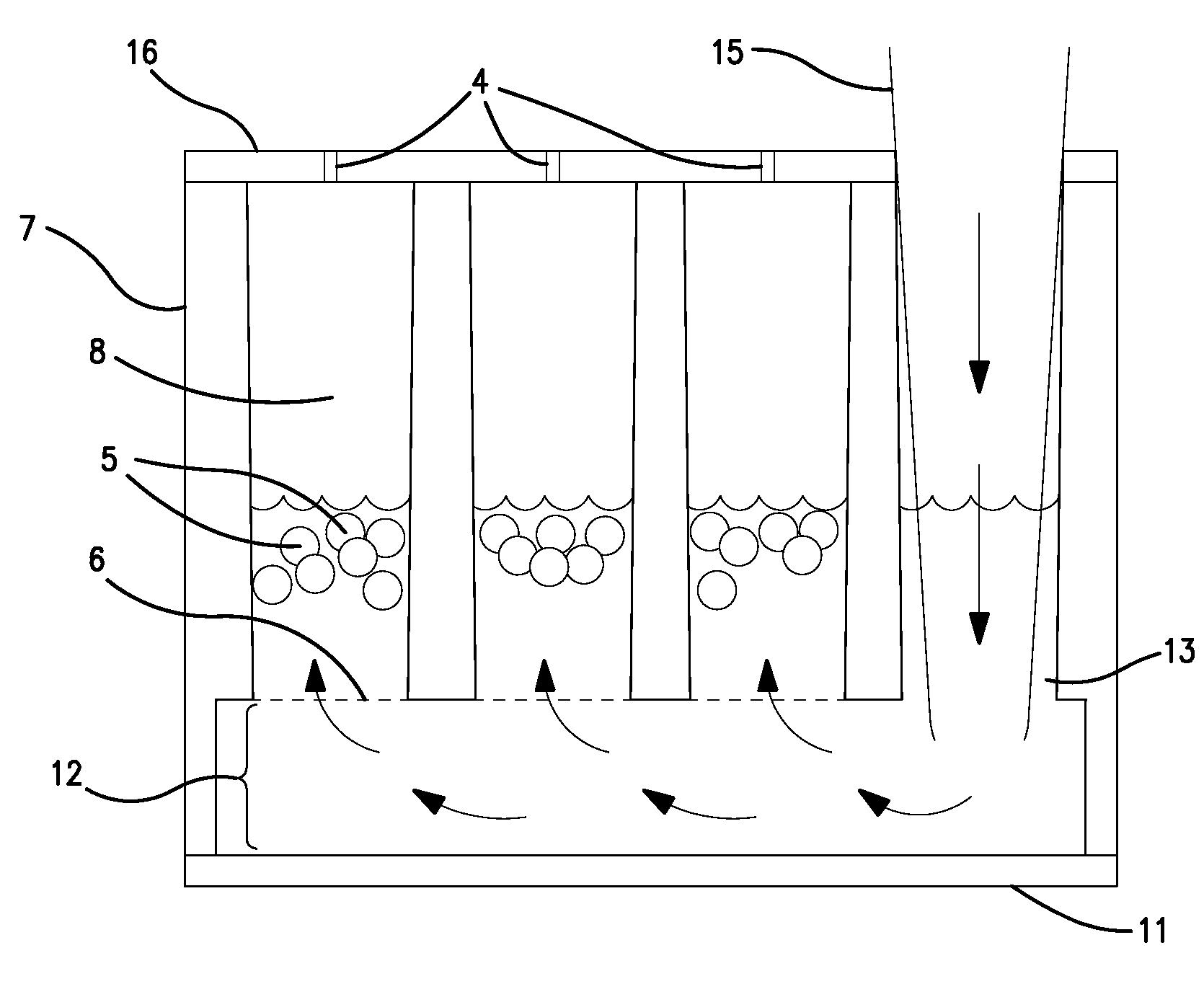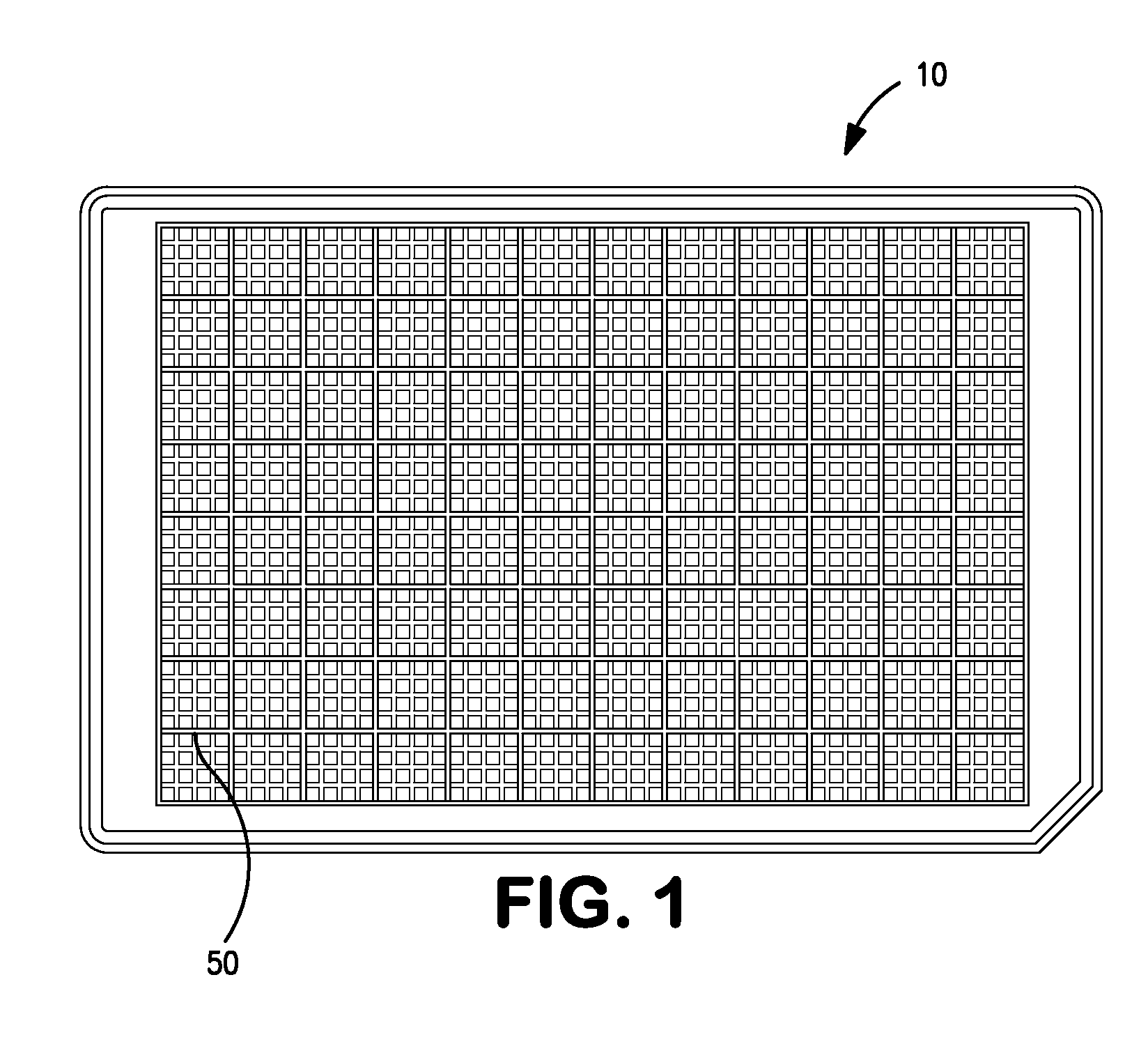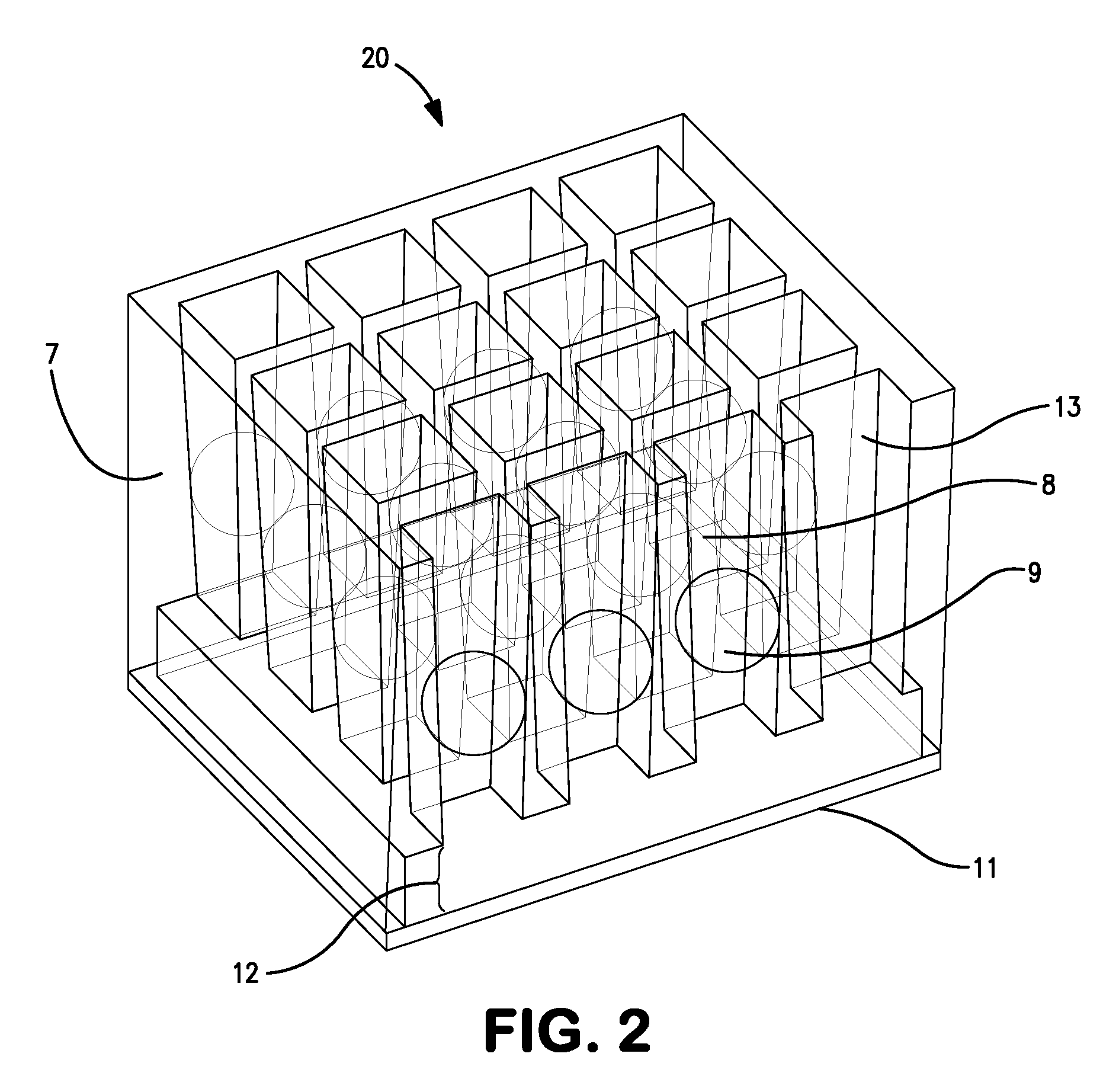System for Preparing Arrays of Biomolecules
a biomolecule and array technology, applied in laboratory glassware, laboratory apparatus, chemistry apparatus and processes, etc., can solve the problems of limited volume that can be spotted in a defined area, difficulty in reliably performing hand-held assays, and low throughpu
- Summary
- Abstract
- Description
- Claims
- Application Information
AI Technical Summary
Benefits of technology
Problems solved by technology
Method used
Image
Examples
example 1
Single Analyte Bead Per Subwell
[0039]A microtiter plate 10 which, such as that shown in FIG. 1, is produced such that the walls defining each well 50 have been adapted to form arrays of subwells within each well. A subwell array 20 may be adapted as shown in FIG. 2 such that the horizontal cross-sectional area of each subwell 8 is larger at the top of each subwell 8 than at the bottom of each subwell 8, advantageously without preventing or impeding fluid flow. This allows a spherical analyte bead 9 having an equatorial cross-sectional area between that of the horizontal cross-sectional area of the top and bottom of each subwell 8 to lodge between the top and bottom of each subwell 8. The force required to dislodge the bead 9 is preferably large enough such that the bead 9 will not dislodge under normal shipping and handling conditions. The bead 9 diameter is preferably between 0.8 mm and 1.7 mm and the well 7 and subwell 8 dimensions and spacings conform to the SBS standard. The sub...
example 2
Multiple Analyte Beads Per Subwell
[0042]A microtiter plate 10 such as that shown in FIG. 1 is produced such that the walls defining each well 50 have been adapted to form arrays of subwells 8 within each well 7. A subwell array 20 may be adapted such as that shown in FIG. 4 to include a porous separator 6 between the subwells 8 and a reservoir 12. Each subwell 8 contains multiple analyte beads 5 which are kept in each subwell 8 by the porous separator 6. The porous separator 6 allows the reservoir 12 to remain in fluid contact with each subwell 8.
[0043]Each subwell array 20 further comprises a fluid port 13 which accommodates a liquid handling dispensing tip 15, such as that shown in FIG. 4. The liquid handling dispensing tip 15 preferably is able to access the plate bottom 11 at the bottom of the reservoir 12 such that the liquid handing dispensing tip 15 may fill each subwell 8 in the subwell array 20 simultaneously, as shown by arrows in FIG. 4. Conversely, the liquid handling di...
PUM
| Property | Measurement | Unit |
|---|---|---|
| diameter | aaaaa | aaaaa |
| diameter | aaaaa | aaaaa |
| diameter | aaaaa | aaaaa |
Abstract
Description
Claims
Application Information
 Login to View More
Login to View More - R&D
- Intellectual Property
- Life Sciences
- Materials
- Tech Scout
- Unparalleled Data Quality
- Higher Quality Content
- 60% Fewer Hallucinations
Browse by: Latest US Patents, China's latest patents, Technical Efficacy Thesaurus, Application Domain, Technology Topic, Popular Technical Reports.
© 2025 PatSnap. All rights reserved.Legal|Privacy policy|Modern Slavery Act Transparency Statement|Sitemap|About US| Contact US: help@patsnap.com



